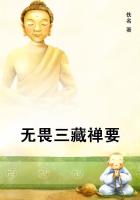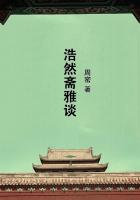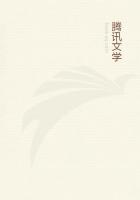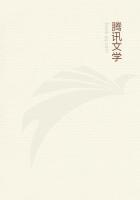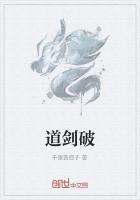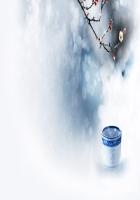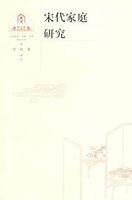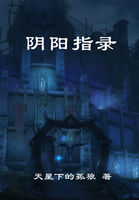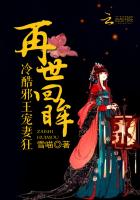A small thing is arranged to reply to a large one, for the small thing is placed at the precise distance that makes it a (Japanese)equivalent.In Italy (and perhaps in other countries) the scales commonly in use are furnished with only a single weight that increases or diminishes in value according as you slide it nearer or farther upon a horizontal arm.It is equivalent to so many ounces when it is close to the upright, and to so many pounds when it hangs from the farther end of the horizontal rod.Distance plays some such part with the twig or the bird in the upper corner of a Japanese composition.Its place is its significance and its value.
Such an art of position implies a great art of intervals.The Japanese chooses a few things and leaves the space between them free, as free as the pauses or silences in music.But as time, not silence, is the subject, or material, of contrast in musical pauses, so it is the measurement of space - that is, collocation - that makes the value of empty intervals.The space between this form and that, in a Japanese composition, is valuable because it is just so wide and no more.And this, again, is only another way of saying that position is the principle of this apparently wilful art.
Moreover, the alien art of Japan, in its pictorial form, has helped to justify the more stenographic school of etching.Greatly transcending Japanese expression, the modern etcher has undoubtedly accepted moral support from the islands of the Japanese.He too etches a kind of shorthand, even though his notes appeal much to the spectator's knowledge, while the Oriental shorthand appeals to nothing but the spectator's simple vision.Thus the two artists work in ways dissimilar.Nevertheless, the French etcher would never have written his signs so freely had not the Japanese so freely drawn his own.Furthermore still, the transitory and destructible material of Japanese art has done as much as the multiplication of newspapers, and the discovery of processes, to reconcile the European designer - the black and white artist - to working for the day, the day of publication.Japan lives much of its daily life by means of paper, painted; so does Europe by means of paper, printed.But as we, unlike those Orientals, are a destructive people, paper with us means short life, quick abolition, transformation, re-appearance, a very circulation of life.This is our present way of surviving ourselves - the new version of that feat of life.Time was when to survive yourself meant to secure, for a time indefinitely longer than the life of man, such dull form as you had given to your work; to intrude upon posterity.To survive yourself, to-day, is to let your work go into daily oblivion.
Now, though the Japanese are not a destructive people, their paper does not last for ever, and that material has clearly suggested to them a different condition of ornament from that with which they adorned old lacquer, fine ivory, or other perdurable things.For the transitory material they keep the more purely pictorial art of landscape.What of Japanese landscape? Assuredly it is too far reduced to a monotonous convention to merit the serious study of races that have produced Cotman and Corot.Japanese landscape-drawing reduces things seen to such fewness as must have made the art insuperably tedious to any people less fresh-spirited and more inclined to take themselves seriously than these Orientals.Apreoccupied people would never endure it.But a little closer attention from the Occidental student might find for their evasive attitude towards landscape - it is an attitude almost traitorously evasive - a more significant reason.It is that the distances, the greatness, the winds and the waves of the world, coloured plains, and the flight of a sky, are all certainly alien to the perceptions of a people intent upon little deformities.Does it seem harsh to define by that phrase the curious Japanese search for accidents?
Upon such search these people are avowedly intent, even though they show themselves capable of exquisite appreciation of the form of a normal bird and of the habit of growth of a normal flower.They are not in search of the perpetual slight novelty which was Aristotle's ideal of the language poetic ("a little wildly, or with the flower of the mind," says Emerson of the way of a poet's speech) - and such novelty it is, like the frequent pulse of the pinion, that keeps verse upon the wing; no, what the Japanese are intent upon is perpetual slight disorder.In Japan the man in the fields has eyes less for the sky and the crescent moon than for some stone in the path, of which the asymmetry strikes his curious sense of pleasure in fortunate accident of form.For love of a little grotesque strangeness he will load himself with the stone and carry it home to his garden.The art of such a people is not liberal art, not the art of peace, and not the art of humanity.Look at the curls and curves whereby this people conventionally signify wave or cloud.
All these curls have an attitude which is like that of a figure slightly malformed, and not like that of a human body that is perfect, dominant, and if bent, bent at no lowly or niggling labour.

